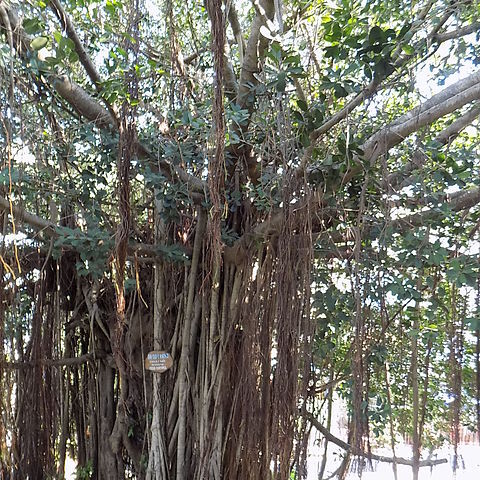Trees, 5-10 m tall, stems often basally many branched, epiphytic when young. Bark pale grayish, smooth. Branchlets green, 5-8 mm in diam., glabrous. Stipules lanceolate to ovate-lanceolate, 1-2 cm. Petiole robust; 1.5-2 cm; leaf blade narrowly elliptic to ovate-elliptic, 12-18 × 5-6 cm, thickly leathery, abaxially pale green, adaxially dark green, base cuneate, margin entire, apex rounded; basal lateral veins short, secondary veins 8-12 on each side of midvein, inconspicuous on both surfaces. Figs axillary on leafy branchlets, paired, dark red to purplish red when mature, globose to depressed globose, 1-1.5 cm in diam., inside without bristles, apical pore flat, bracts small, closed, sessile; involucral bracts green, broadly ovate, 3-4 mm. Male, gall, and female flowers within same fig. Male flowers: pedicellate; calyx lobes 3, lanceolate; stamen 1. Gall flowers: sessile or pedicellate; calyx lobes 4; ovary white; style subapical, long. Female flowers: sessile; style apical, persistent, as long as achene; stigma funnelform. Achenes ovoid, with a sticky surface membrane, tuberculate. Fr. late autumn to early winter.

